Unveiling Liye Ancient City Ruins: A Hidden Gem in China’s History
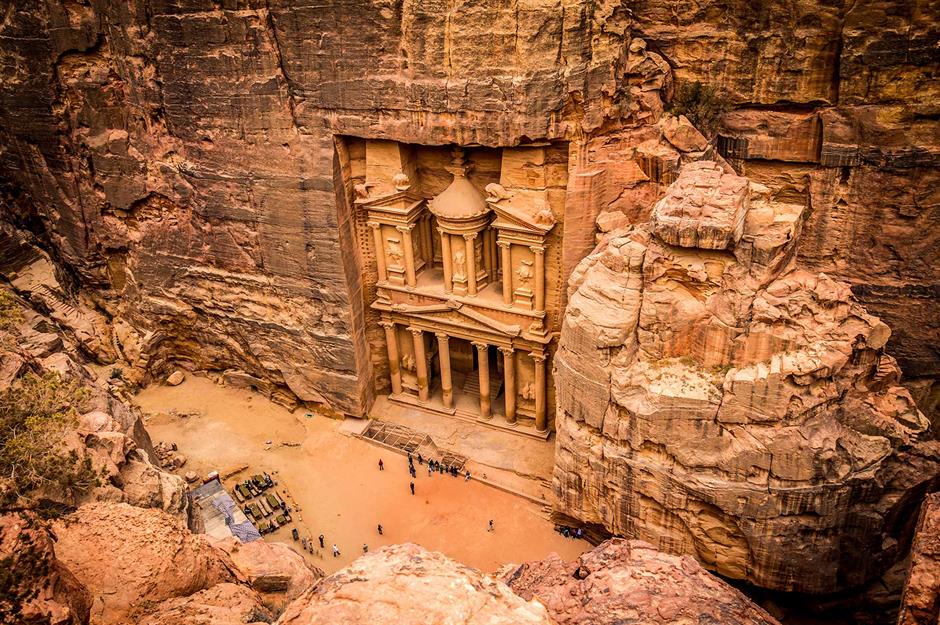
An Essential Guide to Visiting Liye Ancient City Ruins
In This Guide
- An Essential Guide to Visiting Liye Ancient City Ruins
- The Rich History and Legends of Liye Ancient City Ruins
- Main Highlights: What You Absolutely Can’t Miss
- Planning Your Visit: A Practical Guide
- Tickets: Prices, Booking, and Tips
- How to Get There: A Complete Transportation Guide
- Local Cuisine and Accommodation Nearby
- Frequently Asked Questions
- Final Thoughts on Your Trip
Discovering the Echoes of History at Liye Ancient City Ruins
Nestled in the scenic embrace of Longshan County, Liye Ancient City Ruins (里耶古城遗址) beckon history enthusiasts and cultural explorers alike to journey through time. This remarkable site, once a vibrant hub during the Warring States and Qin Dynasties, serves as a testament to China’s rich historical tapestry and its strategic significance as a border town along the Youshui River.
As you step onto the remnants of this ancient city, you are greeted by a landscape steeped in stories of power struggles and cultural intersections. The well-preserved ruins, including ancient walls and moats, whisper tales of the fierce competition between the Qin and Chu states as they fought for dominance. This was not just a military outpost; it was the heart of Dongting County, bustling with life and marking the intersection of the Central Plains and the southwestern territories.

Liye Ancient City Ruins.
One of the highlights of your visit should undoubtedly be the Liye Qin Bamboo Slips Museum, which houses an extraordinary collection of over 10,000 artifacts from the Qin Dynasty. Here, you can explore the intricacies of ancient governance and daily life through meticulously preserved bamboo slips that provide insight into various aspects of society, politics, and economy during this transformative period in Chinese history.
Strolling through the streets of Liye, you’ll find the Ming and Qing Ancient Streets, where the architectural styles tell a story of their own—a blend of local Tujia influences and elements from Jiangxi and Jiangsu provinces. This area not only showcases the beauty of traditional Chinese architecture but also serves as a bustling market that has thrived since the Qing Dynasty, making it a vibrant center for trade and culture.
For those looking to soak in the local culture, the Qin Culture Theme Park offers a unique atmosphere where you can engage with the heritage of the Qin Dynasty, while the Backstreets of the Republic of China provide a glimpse into more recent historical narratives, all surrounded by the stunning natural beauty of the Youshui River.
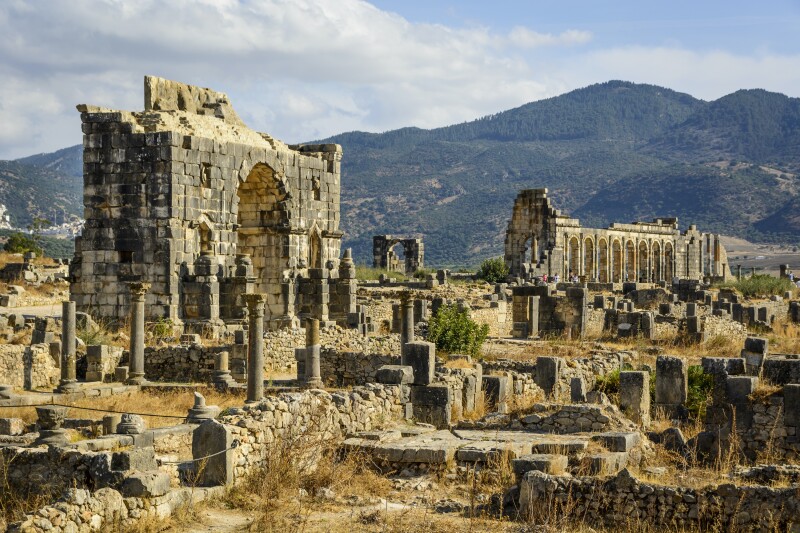
Liye Ancient City Ruins.
Visiting Liye Ancient City Ruins is not merely a sightseeing trip; it is an invitation to step into the pages of history. Whether you’re a history buff, an architecture lover, or simply someone seeking a tranquil escape from the bustling tourist paths, Liye promises an enriching experience that will linger in your memory long after you leave its ancient walls. So pack your bags, and prepare to walk through time in one of China’s hidden historical gems.
The Rich History and Legends of Liye Ancient City Ruins
Liye Ancient City Ruins, steeped in rich history and captivating legends, serves as a remarkable testament to China’s storied past. Nestled in Longshan County, Hunan Province, this ancient metropolis is not just a relic of architectural splendor; it is a vibrant narrative woven through centuries of conflict, culture, and commerce.

Liye Ancient City Ruins.
Historical Significance
Originally established during the Warring States Period, Liye was a pivotal locale where the powerful states of Qin and Chu vied for dominance over the region. The ancient city was strategically positioned along the Youshui River, acting as a crucial passage connecting the fertile Central Plains with the southwestern territories. This geographical advantage made it an essential garrison and administrative center, particularly after the Qin Dynasty unified China in 221 BC.
As the seat of Dongting County, Liye thrived as a bustling hub during the Qin Dynasty. Historical records indicate that by the 32nd year of Qin Shihuang’s reign, the county had a substantial population of over 30,000, representing a significant portion of the national demographics of the time. The infrastructure established here, including ancient walls, moats, and residential foundations, not only reflects the architectural ingenuity of the era but also serves as a window into the administrative complexities of early imperial China.

Liye Ancient City Ruins.
Archaeological Discoveries
The archaeological importance of Liye cannot be overstated. In 2002, the discovery of more than 38,000 Qin bamboo slips at the site revealed invaluable insights into the administrative workings of the Qin Empire. These slips document various aspects of life during the period, from military strategies to agricultural practices, providing a comprehensive view of the socio-political landscape of ancient China. The Liye Qin Bamboo Slips Museum, housing over 10,000 of these relics, is a testament to the city’s historical significance and offers an engaging exploration of its past.
Legends and Cultural Heritage
Liye is not only a site of historical importance but also one rich in folklore. One of the most enduring legends associated with the ancient city revolves around the conflict between the Qin and Chu states. It is said that the fierce battles fought in this region gave rise to tales of heroism and sacrifice, with local warriors becoming legendary figures in Chinese folklore. These stories often depict the struggles of the people caught in the throes of war, their resilience symbolizing the indomitable spirit of the Chinese nation.
Another captivating legend involves the Youshui River itself. Local lore suggests that the river is home to benevolent spirits that protect the city and its inhabitants. Residents recount tales of mysterious lights flickering over the water at night, which they believe are manifestations of these guardian spirits, guiding lost travelers and ensuring safe passage.
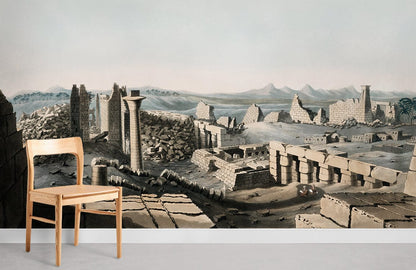
Liye Ancient City Ruins.
Architectural Marvels
As you wander through the remnants of Liye, you will encounter various architectural marvels that echo the past. The ancient city walls, constructed during the Warring States period, stand resilient against time, while the intricacies of the Ming and Qing Dynasty streets reveal the influences of commerce and culture that shaped the region. The unique blend of Tujia architectural styles coupled with elements from Jiangxi, Jiangsu, and Anhui showcases the city’s rich multicultural heritage.
Conclusion
Visiting Liye Ancient City Ruins offers an unparalleled opportunity to step back in time and immerse oneself in the deep historical currents that have shaped China. From the tales of its legendary past to the tangible remnants of its architectural splendor, Liye is a hidden gem waiting to be discovered by those who seek to understand the intricate tapestry of Chinese history and culture. Whether you’re standing on the ancient city walls or exploring the vibrant backstreets, the echoes of history are sure to resonate within you, making your visit a truly memorable experience.
Main Highlights: What You Absolutely Can’t Miss
Discovering Liye Ancient City Ruins: A Journey Through Time
Nestled in the picturesque landscape of Longshan County, the Liye Ancient City Ruins offer a captivating glimpse into China’s historical tapestry. Once a bustling hub of trade and culture, this ancient town is steeped in stories of the Qin and Han dynasties. Here are the main highlights you absolutely can’t miss during your visit.
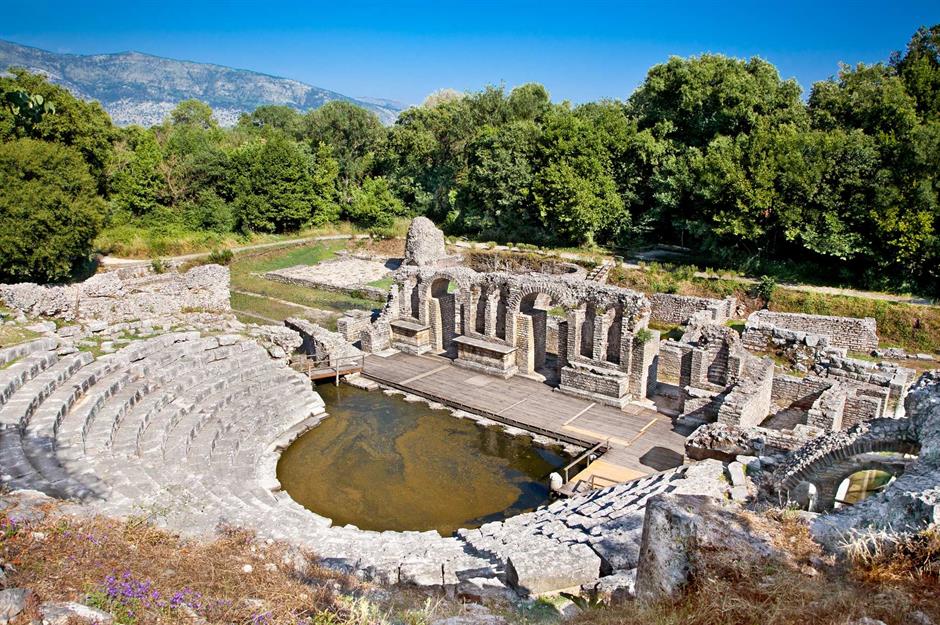
Liye Ancient City Ruins.
1. Liye Qin Bamboo Slips Museum
Start your exploration at the Liye Qin Bamboo Slips Museum, which houses over 8,000 artifacts from the Warring States Period to the Qin and Han Dynasties. This national second-level museum provides insight into the administrative and social systems of the Qin Empire. Notable exhibits include the famed “Nine-Nine Multiplication Table” bamboo slip, revealing the advanced mathematics of the time. The museum’s carefully curated displays will enrich your understanding of this pivotal era in Chinese history.
2. The Ancient City Ruins
A short stroll from the museum leads you to the Liye Ancient City Ruins. Once a strategic stronghold in the power struggle between the Qin and Chu states, these ruins offer a tangible connection to the past. Walk along the remnants of ancient walls, moats, and wells that have withstood the test of time. The rectangular layout of the city, measuring 210 meters by 107 meters, allows you to appreciate the architectural ingenuity of the era. The archaeological significance of these ruins has been likened to that of the Qin bamboo slips themselves.
3. Qin Culture Theme Park
Delve deeper into the Qin heritage at the Qin Culture Theme Park, where interactive exhibits and reconstructed structures bring history to life. Here, you can explore postal stations and traditional shops that reflect the daily life of the Qin people. The park is beautifully situated along the Youshui River, offering stunning views and a serene atmosphere. It’s a perfect spot for a leisurely walk while absorbing the essence of Qin culture.

Liye Ancient City Ruins.
4. Ming and Qing Ancient Streets
Wander through the Ming and Qing Ancient Streets, a charming area that preserves the architectural styles of bygone eras. This historic district features a network of seven streets and six lanes, with over 910 well-preserved buildings. As you stroll along the bluestone-paved streets, you’ll encounter traditional Tujia architecture blended with influences from Jiangxi, Jiangsu, and Anhui. Don’t forget to visit the local shops and taste authentic regional delicacies.
5. Backstreets of the Republic of China
Experience the charm of the Backstreets of the Republic of China, where history and culture converge. This area is designed to reflect the leisurely lifestyle of the early 20th century, with quaint cafés and boutique accommodations. The beautiful riverside landscape enhances the nostalgic ambiance, making it a delightful spot for relaxation and exploration.
6. Yiqinlou Hotel
For a unique stay, consider the Yiqinlou Hotel (formerly Liye Mansion). Its distinctive architecture and proximity to the ancient city ruins make it an ideal retreat. Enjoy the comforts of modern amenities while being surrounded by historical echoes of the past. Sit back at the hotel’s leisure tea bar, savoring the view of the Youshui River, and reflect on your journey through time.
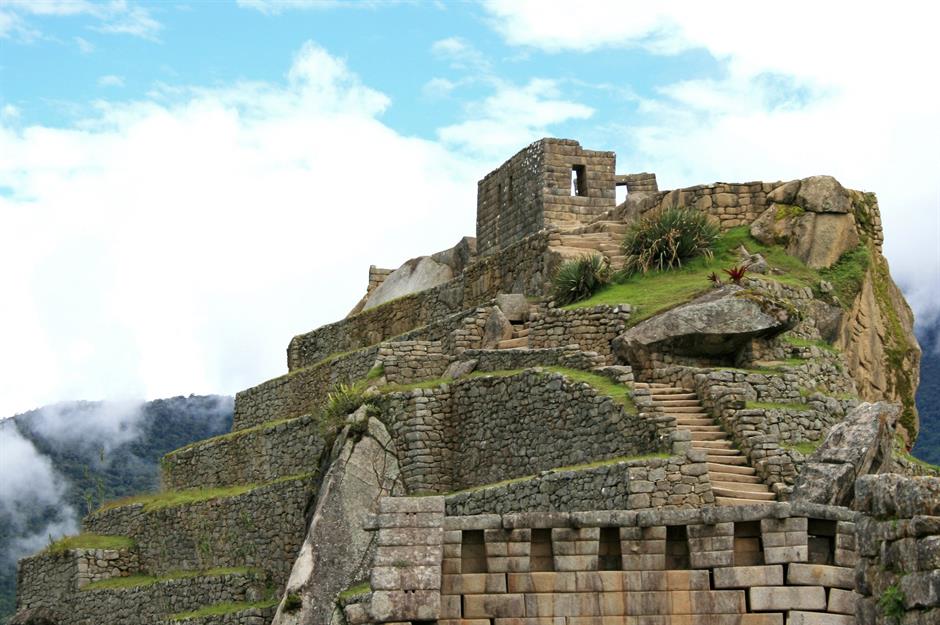
Liye Ancient City Ruins.
Final Thoughts
Liye Ancient City Ruins is more than just a historical site; it’s a doorway to understanding the rich cultural heritage of China. Each highlight offers a unique perspective on the life and times of the Qin Dynasty and beyond. Whether you are a history buff or simply seeking a tranquil escape from the bustling tourist paths, Liye promises an unforgettable experience.
Planning Your Visit: A Practical Guide
Discovering Liye Ancient City Ruins: A Practical Travel Guide
Nestled in the scenic landscape of Longshan County, the Liye Ancient City Ruins (里耶古城遗址) serve as a captivating portal into China’s rich historical tapestry. This guide will equip international travelers with essential information to enhance their experience as they explore this remarkable site.
Getting There
Location:
Liye Ancient City is located in Longshan County, Hunan Province, approximately 200 kilometers from Changsha, the provincial capital.

Liye Ancient City Ruins.
Transportation Options:
-
By Train:
Trains to Longshan County are available from major cities like Changsha. From Longshan, local buses or taxis can take you directly to Liye. -
By Bus:
Direct buses from Changsha South Bus Station to Liye run daily. The journey takes about 6 hours. -
By Car:
If you prefer driving, take the Jingzhu Expressway from Changsha, followed by the Provincial Road 219. The drive provides picturesque views of the Hunan countryside.
Best Time to Visit
Seasonal Considerations:
The ideal time to visit is during spring (March to May) and autumn (September to November) when the weather is mild and pleasant. Avoid the peak summer months due to heat and potential rain.

Liye Ancient City Ruins.
Suggested Duration:
Allocate half a day to a full day to explore the ruins and surrounding attractions thoroughly.
Key Attractions
-
Liye Qin Bamboo Slips Museum:
This museum houses over 10,000 artifacts from the Warring States to the Han Dynasties, showcasing the intricacies of Qin administration and culture. It’s a must-see for history enthusiasts. -
Liye Ancient City Ruins:
Walk through the remnants of this once-strategic military town, founded during the Warring States Period. The well-preserved walls, moats, and foundations offer a glimpse into life during the Qin Dynasty. -
Ming and Qing Ancient Streets:
Stroll through charming streets lined with traditional architecture. The historic layout, featuring seven streets and six lanes, reveals the town’s commercial heritage. -
Qin Culture Theme Park:
Engage with interactive exhibits that replicate life during the Qin Dynasty. This park is both educational and enjoyable, making it great for families. -
Back Streets of the Republic of China:
Experience the cultural revival of this area, which combines leisure and educational tourism with local folk customs.

Liye Ancient City Ruins.
Practical Information
-
Admission Fee:
Entry to the ancient city ruins is free, making it an accessible destination for all travelers. -
Visitor Facilities:
Restrooms and basic amenities are available near the main attractions. It’s advisable to carry water, especially during warmer months. -
Guided Tours:
For a more immersive experience, consider hiring a local guide who can provide insights into the history and significance of the ruins.
Where to Stay
- Yiqinlou Hotel:
Formerly known as Liye Mansion, this hotel offers comfortable accommodations with stunning views of the Youshui River. It’s conveniently located near the ancient city ruins.

Liye Ancient City Ruins.
Culinary Delights
Don’t miss the opportunity to savor local cuisine while in the area. Explore nearby eateries for authentic Xiangxi snacks, such as stinky tofu and rice tofu, which reflect the region’s culinary heritage.
Tips for Travelers
-
Cash:
While some places may accept digital payments, carrying cash in local currency (RMB) is advisable, especially in smaller shops or markets. -
Language:
English may not be widely spoken, so downloading a translation app or carrying a phrasebook could enhance your interactions with locals. -
Respect Local Customs:
As you explore, remember to be respectful of cultural norms and practices prevalent in the area.
Conclusion
Liye Ancient City Ruins offer a serene escape into China’s past, away from the bustling tourist hotspots. With its rich history, stunning landscapes, and unique cultural experiences, this destination promises an enriching journey for those eager to delve into the depths of Chinese heritage. Prepare for a memorable visit that will leave you with lasting impressions of this historical gem.
Tickets: Prices, Booking, and Tips
Visitor Information for Liye Ancient City Ruins
When planning your visit to the stunning Liye Ancient City Ruins, understanding the ticketing process, prices, and additional tips will enhance your experience and ensure a smooth journey through this historical gem.
Admission Fees
- Entry Fee: Free
The Liye Ancient City Ruins welcome visitors without any admission charge, making it an accessible destination for anyone interested in exploring its rich history and culture.
Booking Tickets
- Advance Booking: Not required
Since there is no entry fee, there is no need for advance booking. You can simply arrive at the site and begin your exploration at your convenience.
Opening Hours
- Operational Hours: Open year-round
The ruins can be visited at any time, allowing you to plan your visit based on your itinerary in the Longshan County area.
Tips for a Memorable Visit
-
Best Time to Visit:
Early morning or late afternoon are ideal times to explore the ruins, as the weather is typically cooler, and the lighting is perfect for photography. -
Guided Tours:
Consider joining a guided tour or hiring a local guide to gain deeper insights into the historical significance and architectural features of the ancient city. -
What to Bring:
Comfortable walking shoes are a must, as you’ll be wandering through ancient streets and uneven terrain. Don’t forget your camera to capture the picturesque scenery! -
Nearby Attractions:
While in the area, make sure to visit the Liye Qin Bamboo Slips Museum and the Ming and Qing Ancient Streets for a comprehensive understanding of the region’s history and culture. -
Local Cuisine:
Take time to enjoy local delicacies at nearby eateries. Sampling traditional Xiangxi snacks is a delightful way to enrich your travel experience. -
Transportation:
If you’re traveling from major cities like Changsha, consider renting a car or taking a bus to explore the surrounding scenic areas at your own pace.
By keeping these details in mind, you can immerse yourself fully in the historical allure of Liye Ancient City Ruins and enjoy a unique journey through time.
How to Get There: A Complete Transportation Guide
Getting to Liye Ancient City Ruins is an adventure steeped in history and natural beauty, located in the picturesque Longshan County of Hunan Province. This ancient town, known for its rich cultural heritage, is well worth the journey. Here’s how to navigate your way to this hidden gem.
By Air
The nearest major airport to Liye Ancient City is Changsha Huanghua International Airport (CSX), which is approximately 370 kilometers away. This airport handles both domestic and international flights, making it a convenient entry point for international travelers.
From the Airport:
- By Train:
- Take the airport shuttle to Changsha South Railway Station.
-
From there, board a high-speed train to Longshan Railway Station. The journey takes around 2.5 hours.
-
By Bus:
- Alternatively, you can take a long-distance bus directly from Changsha to Longshan County, which usually takes about 5-6 hours.
By Train
If you’re already in China, taking the train to Longshan is an excellent option.
– High-speed trains connect major cities like Beijing, Shanghai, and Chengdu to Longshan Railway Station.
– Once you arrive at Longshan, you can take a taxi or local bus to Liye Ancient City, which is roughly 20 kilometers away, and the drive should take about 30 minutes.
By Bus
For those preferring road travel, buses are available from various cities:
– From Changsha: Buses depart from Changsha South Bus Station to Longshan County. The bus ride takes approximately 6 hours. Be sure to check the schedule, as services may vary.
– From Zhangjiajie: There are also buses from Zhangjiajie, making it a feasible option for travelers exploring this popular tourist destination.
By Car
For the adventurous spirit, renting a car is a great way to explore the scenic landscapes of Hunan at your own pace.
– Driving Directions:
– From Changsha, take the Jingzhu Expressway to Xiangtan, then transfer to the Tanshao Expressway, and continue on to Shaohuai Expressway.
– Exit at Longhui County and follow Provincial Road 219 to reach Liye Ancient City. The drive typically takes around 6 hours.
Local Transportation
Once in Liye, you can easily explore the ancient city and its surroundings:
– Walking: The city is small enough to navigate on foot, allowing you to soak in the historical ambiance.
– Bicycles: Renting a bicycle can be a fun way to discover the scenic spots and ancient streets at your leisure.
– Taxis: Local taxis are available for more convenient travel to nearby attractions, such as the Liye Qin Bamboo Slips Museum and the Qin Culture Theme Park.
Conclusion
Reaching Liye Ancient City Ruins is not just about the destination, but also about the journey. Whether you opt for air travel, train, bus, or car, each mode offers a unique glimpse into the heart of Hunan Province. Prepare to immerse yourself in the rich tapestry of Chinese history as you explore this remarkable ancient site.
Local Cuisine and Accommodation Nearby
Exploring the Liye Ancient City Ruins is not just a journey through history but also an opportunity to indulge in the local culture, including its rich culinary offerings and charming accommodations. Here’s what you can look forward to during your visit.
Local Cuisine
The culinary scene in and around Liye Ancient City is a delightful reflection of the region’s cultural heritage, offering a mix of traditional Tujia flavors and unique local dishes. Here are some must-try delicacies:
- Stinky Tofu (臭豆腐): A beloved local snack, stinky tofu is fermented tofu that is deep-fried to crispy perfection. Its strong aroma might be intimidating, but the flavor is undeniably delicious.
- Rice Tofu (米豆腐): This dish is a staple in Xiangxi cuisine, made from rice flour. It can be served in various ways, often stir-fried with vegetables or in a spicy broth.
- Fried Glutinous Rice Cakes (炸糯米饼): These sweet treats are crispy on the outside and chewy inside, providing a satisfying texture that pairs well with savory dips.
- Bamian Mountain Roast Whole Lamb (巴绵山全羊): If you venture to Bamian Mountain, don’t miss the opportunity to taste this succulent dish. It requires advance reservations, so plan ahead!
- Local Xiangxi Snacks: Explore the streets for a variety of snacks, including taro cakes, pickled vegetables, and spicy hot pot, reflecting the region’s diverse culinary influences.
Accommodation Options
After a day of exploring the ancient ruins and indulging in local flavors, you’ll want a comfortable place to rest. Here are some recommended accommodations nearby:
-
Yiqinlou Hotel (易琴楼酒店): Formerly known as Liye Mansion, this hotel is situated conveniently close to the ancient city ruins. With its unique architectural style and full amenities, including a leisure tea bar and independent chess rooms, it offers a cozy retreat. Enjoy views of the Youshui River from your room, making it an ideal choice for relaxation after a day of sightseeing.
-
Homestays in Liye: For a more immersive experience, consider staying in one of the local homestays. These quaint lodgings provide a chance to connect with the Tujia culture and enjoy homemade meals prepared by local families. Look for options with traditional architecture and hospitality for an authentic experience.
-
Backstreets of the Republic of China: This area features various accommodations that blend historical charm with modern comforts. Here, you can enjoy the tranquil setting and explore the picturesque surroundings.
Visiting the Liye Ancient City Ruins is not only about witnessing the remnants of history but also about savoring the local culture through its food and hospitality. Whether you are tucking into a plate of stinky tofu or unwinding at Yiqinlou, your experience will be enriched by the flavors and warmth of this enchanting region.
Frequently Asked Questions
Frequently Asked Questions about Liye Ancient City Ruins
1. Where is Liye Ancient City located?
Liye Ancient City is situated in Longshan County, Hunan Province, close to the borders of Sichuan and Hubei. It lies on the west bank of the Youshui River, making it an important historical site in southwest China.
2. What is the historical significance of Liye Ancient City?
Liye Ancient City served as a crucial strategic location during the Warring States Period and the Qin Dynasty. It was known as a border town, facilitating trade and military movements between the Central Plains and the southwest. The ruins provide invaluable insights into the administrative and cultural practices of the Qin Empire.
3. What are the main attractions within the Liye Ancient City area?
The site features several notable attractions, including:
– Liye Qin Bamboo Slips Museum: Home to over 10,000 relics from the Warring States to the Han Dynasty.
– Liye Ancient City Ruins: Remnants of a once-thriving urban center, including city walls and ancient wells.
– Ming and Qing Ancient Streets: A charming area showcasing the architectural styles from the Ming and Qing Dynasties.
– Qin Culture Theme Park: A thematic park dedicated to the culture of the Qin Dynasty.
– Backstreets of the Republic of China: A reconstructed area reflecting the lifestyle and architecture of early 20th-century China.
4. How can I get to Liye Ancient City?
Travelers can reach Liye Ancient City by car or bus. It is approximately a six-hour drive from Changsha via the Jingzhu and Tanshao expressways. Alternatively, direct buses are available from Changsha South Bus Station.
5. What is the best time to visit Liye Ancient City?
The ideal times to visit are during the spring (March to May) and autumn (September to November) when the weather is pleasant for outdoor exploration. These seasons also offer beautiful natural scenery.
6. Is there an admission fee for Liye Ancient City?
Entry to the Liye Ancient City Ruins is free of charge, allowing visitors to explore the site without any cost. However, some museums or specific attractions may have their own entrance fees.
7. Are there accommodations available near Liye Ancient City?
Yes, there are several accommodation options nearby, including the Yiqinlou Hotel, which offers comfortable facilities and stunning views of the Youshui River. Visitors can also find various guesthouses and hotels that cater to different budgets.
8. What should I expect in terms of tourist crowds?
Liye Ancient City is relatively less commercialized compared to other tourist destinations in China, providing a quiet and intimate experience. Visitors can enjoy a leisurely exploration of the ancient streets and historical sites without the hassle of large crowds, making it an ideal spot for history enthusiasts and cultural travelers.
Final Thoughts on Your Trip
As you wrap up your journey through the enchanting Liye Ancient City Ruins, it’s essential to reflect on the myriad experiences that await you in this historically rich corner of China. Nestled in the heart of Longshan County, Liye is not just a relic of the past; it’s a vibrant tapestry woven with tales of the Qin Dynasty, ancient trade routes, and cultural evolution.
A Journey Through Time
Every corner of Liye, from the well-preserved ancient streets of the Ming and Qing Dynasties to the fascinating Liye Qin Bamboo Slips Museum, beckons you to delve deeper into China’s historical narrative. The ruins themselves, once a strategic stronghold during the Warring States Period, serve as a poignant reminder of the region’s significance in shaping Chinese civilization. Walking through the remnants of the ancient city walls and moats, you can almost hear the echoes of merchants and scholars who once traversed these pathways.
Cultural Immersion
Liye offers an authentic glimpse into the lives of the Tujia and Miao ethnic groups, enriching your understanding of their customs and traditions. The charming backstreets of the Republic of China, lined with quaint shops and local delicacies, provide a delightful backdrop for a leisurely stroll, allowing you to savor both the atmosphere and the flavors of this unique region.
Nature’s Embrace
Don’t forget to take a moment to appreciate the stunning natural beauty surrounding Liye. The banks of the Youshui River and the majestic Bamen Mountain create a serene setting, perfect for contemplation and relaxation. Whether you choose to enjoy a riverside picnic or embark on a short hike, the landscape invites you to reconnect with nature.
Final Thoughts
As you prepare to leave Liye, carry with you the memories of its tranquil streets, rich history, and vibrant culture. This hidden gem is a reminder that some of the most profound experiences lie off the beaten path, waiting for those who seek them. Embrace the stories of the past and let them inspire your journey ahead, knowing that Liye will forever remain a cherished chapter in your travel adventures. Safe travels, and may your next destination be just as captivating!